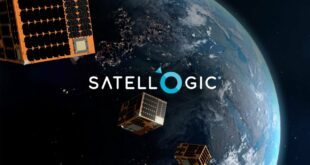
The Queensland government of Premier Annastacia Palaszczuk has released the Queensland Space Industry Strategy 2020-2025, the Australian state’s plan to create even more jobs in more industries for Queenslanders.
Queensland’s Minister for State Development Cameron Dick said the AUS$8 million (US$5.38 million) investment will accelerate Queensland’s space industry into a new growth phase, establishing its position as an Australasian leader for space technologies and launches.
“Fifty years after humankind first walked on the Moon, we are setting up Queensland’s space industry for the next 50 years,” Mr. Dick said. “Because when it comes to the space industry, we want to see Queensland boldly go where no state has gone before.”
“Queensland has already gained the reputation as Australia’s space coast, and through this strategy our government is looking to unlock maximum benefit for local businesses and workers.By establishing the Australian Space Agency in 2018, the federal government also recognises the importance of this industry when it comes to jobs and the economy,” said Mr. Dick.
“Our state has a respected high-tech aerospace industry, and is renowned globally for civil and military aviation, advanced manufacturing, and associated industries like mining equipment, technology and services (METS). This gives us a strong foundation to extend our reach when it comes to space-related activities such as robotics, automation, systems design, and the launching of payloads,” he added.
“Our goal is to create up to 6000 new high-value jobs for Queenslanders and generate $6 billion annually for the state by 2036,” he said. “Now is the right time to support Queensland’s endeavours to secure our lead place in Australia’s space race.”
Queensland has four key space-related strengths that are primed to capitalise on:
- Opportunity for launch: advantageous location, an existing launch supply chain, and supporting university-led research base
- Opportunity for ground systems: suitable weather conditions, proximity to the equator, and remote internet and data backhaul services
- Space-enabled services: existing industries (e.g. Earth observation) strengthened by Queensland’s climate, geography and remoteness
- Robotics, automation and manufacturing: built through Queensland’s strong aerospace, research, mining, manufacturing and defence industries
Based on these strengths, the Queensland government has developed a two-part action plan to grow its space industry that consists of strengthening capability in the state, such as supporting development of ground-based space infrastructure such as launch facilities and ground stations; and growing Queensland’s commercial space industry by assisting local businesses access national and international markets.
Australia’s space industry generates AUS$3 billion to AUS$4 billion (US$2.02 to US$2.69 billion) in annual revenue and supports around 10,000 full-time equivalent jobs. The global space economy is already worth US$345 billion and is forecast to grow to US$1.1 trillion by 2040.
Mr. Dick said actions under the Queensland Space Industry Strategy 2020-2025 will help Queensland capture a larger share of this booming global market.
“Queensland’s space industry already supports 2000 jobs and generates $760 million in annual revenue through industry services like satellite communications, and we’re eager to build on these numbers,” he said. “Space technology also adds value to other areas of our economy, delivering increased productivity through Earth observation data and satellite positioning systems.”
“For example, there is huge potential for key industries in Queensland to benefit from satellite data, to improve practices like land and fresh water management, and agricultural production,” Mr. Dick added. “Backing and further developing our space industry provides Queensland with greater opportunities for growth, particularly in our regions, and will help generate more work for businesses and new career paths for our workforce.”
The vast open space found in Queensland’s outback is perfect for locating satellite ground stations, while an extensive coastline and proximity to the equator are significant assets for the potential establishment of a launch site.
Australia’s most advanced satellite launch vehicle developers – Gilmour Space Technologies, Black Sky Aerospace, and Hypersonix – are all based in Queensland.
These companies are developing small-to-medium launch platforms to meet the world’s growing demand for smaller satellites and rapid launch capability.
Gilmour Space Technologies founder and CEO Adam Gilmour welcomed Queensland’s commitment to growing the space industry in Australia.
“The ever-increasing demand for big data is driving the world’s demand for satellite services and the need to launch, build and control satellites,” Mr Gilmour said. “With Queensland’s existing industry and geographical strengths, the opportunity is huge.”





